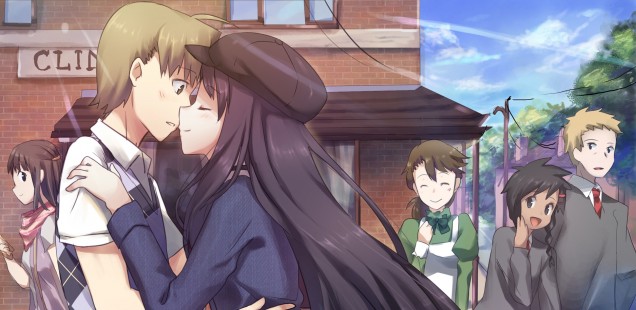
Moment of Decision
Does the timing and presentation of choices hold meaning in itself? Trivun Luzaic muses about Katawa Shoujo’s structure.
Before Katawa Shoujo, 4chan’s surprisingly tasteful take on love and disability, I had never considered visual novels something I would enjoy, but going through the game’s five story arcs, I was slowly converted. The writing talent, the emotional twists, but most importantly, the choices I had to make. The realization how significantly my actions were impacting the lives of these characters was daunting. I was hooked.
I have no doubt this is a deliberate effort. As soon as our weak-hearted protagonist Hisao arrives at the Yamaku Academy for disabled students, he is targeted by Shizune as a potential member of the student council she presides, and immediately you are forced to consider whether to fight or permit her advances. It’s a clever device to establish both Shizune’s brash, forward character and choice as the central mechanic of the game.
Even more impressively, Katawa Shoujo understands how to weave its decisions into the narrative and structural groundwork. Blind Lilly and her best friend, the scared and scarred Hanako are virtually inseparable, and their respective paths similarly connected. The first steps towards either of them are identical: They need to allow you in their little group, then you can worry about spending quality time with one of them. Rin has trouble trusting people, so before you can get her to reveal the truth about the accident that left her legless, you will have to confess your own condition.
The structure of each girls’ path speaks to her character in some way. For most of Shizune’s arc you have absolutely no say in matters, a testament to her controlling nature. The climactic choice takes place in her absence, between you and her friend Misha, exploring how her dominance affects the people around her. Rin, the self-destructive artist, spouts metaphors and non-sequiturs, but sports relatively straightforward choices, perhaps to show that you can understand her needs even if you can’t always make sense of her words. After plenty of kindness and support, Hanako’s final dilemma asks you to abandon her in a time of need, to trust in her own strength, to establish you as equal partners and challenge her to come out of her shell. For her, the most helpful decision is the decision not to help her.
Many games use the same basic narrative mechanics as Katawa Shoujo’s branching storyline, but few use them so effectively, so beautifully. Not only does it provide meaningful choices and portray their consequences in a meaningful way, it actually uses the grand structure of its decision tree to characterize its layered protagonists allegorically. Perhaps even BioWare could learn a thing or two from this humble project.
Trivun Luzaic is an English graduate of Mathematics and aspiring screenwriter and director. Also currently learning Japanese and beginning his own video game project.